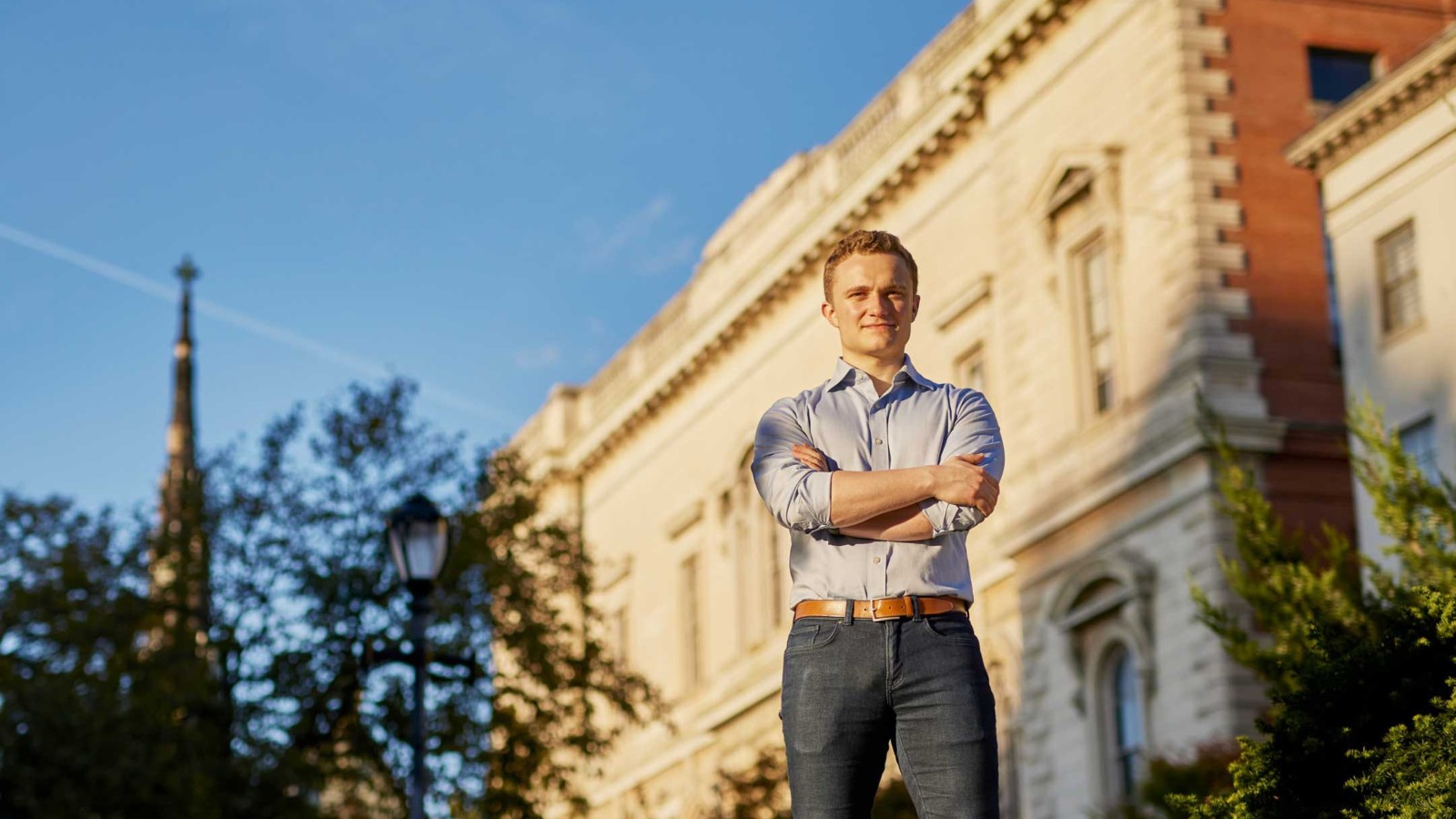Tapped to coordinate contact tracing for the city of Baltimore, Brendan Hellweg ’14 helped create a model program that generates jobs as it protects public health
Baltimore natives are quick to list the city’s emblematic attractions: quirky neighborhoods, great regional food (crab cakes! pit beef!), water taxis, the Ravens and Orioles. Brendan Hellweg ’14 has a transplant’s appreciation for all those things, but what really drew him to Charm City was its well-documented challenges. Offered an opportunity to grapple with them after graduating from Yale in 2018, he jumped at the chance. “I’d never been to Baltimore before interviewing for the job,” he says. “I came because I knew the work would have immediate impact. Efficient city governments are places where you can directly deliver meaningful services.”
As special project manager and data lead in the Mayor’s Office of Performance and Innovation, Hellweg helps devise and implement data-driven solutions to stubborn urban issues like poverty and public safety. Until last spring he spent much of his time figuring out ways to keep at-risk young people from entering the criminal justice system. “Then,” he says, “the world changed.” Anxiously watching as the pandemic clobbered the East Coast, the Innovation Team pivoted overnight to full-time COVID-19 response.
Hellweg was tapped to coordinate the city’s nascent contact-tracing initiative. Working without a blueprint, his team built a novel program called Baltimore Health Corps that recruits, trains, and employs jobless city residents to serve as contact tracers, health outreach educators, and care coordinators for virus patients. “We’re taking the necessity of a public health response,” he says, “and turning it into an employment-development engine”—in a city where unemployment was an issue long before the pandemic began shutting down industries.
As the virus ramped up last spring, nothing about the city’s response was certain. “The only thing we knew was that we had to create something quickly,” Hellweg says. “The challenge was visualizing exactly what it should be.” Drawing on a background in economics, data analytics, and urban development, he created more than a dozen possible versions of a contact-tracing pilot. In part, he says, his thinking was influenced by a U.S. history class he took at Williston, where teacher Peter Gunn encouraged students to think about “what people deserve from their governments.”
Early in the modeling process, Hellweg collaborated with the city’s philanthropic community, sharing the city’s objectives and needs. “We didn’t know how many people we could hire,” he says, “because we didn’t know what level of funding we would have.” His team was able to forge partnerships with 20 different private institutions, including the Rockefeller Foundation and Bloomberg Philanthropies, securing more than $11 million. Funding in place, Baltimore Health Corps launched on June 4 and soon was hiring 25 people a week. By the end of the year, it had hired more than 300 health care workers from the city’s hardest hit communities, at a living wage, and with subsidized health insurance.
Public policy experts have taken notice.“The Baltimore Health Corps is the type of collaborative and innovative solution we need right now,” says Dr. Rajiv J. Shah, president of the Rockefeller Foundation. “By putting the community at the very core of this approach, the pilot will support the city’s public health and economic needs while serving as a model that can be adapted and scaled in cities across America.”

